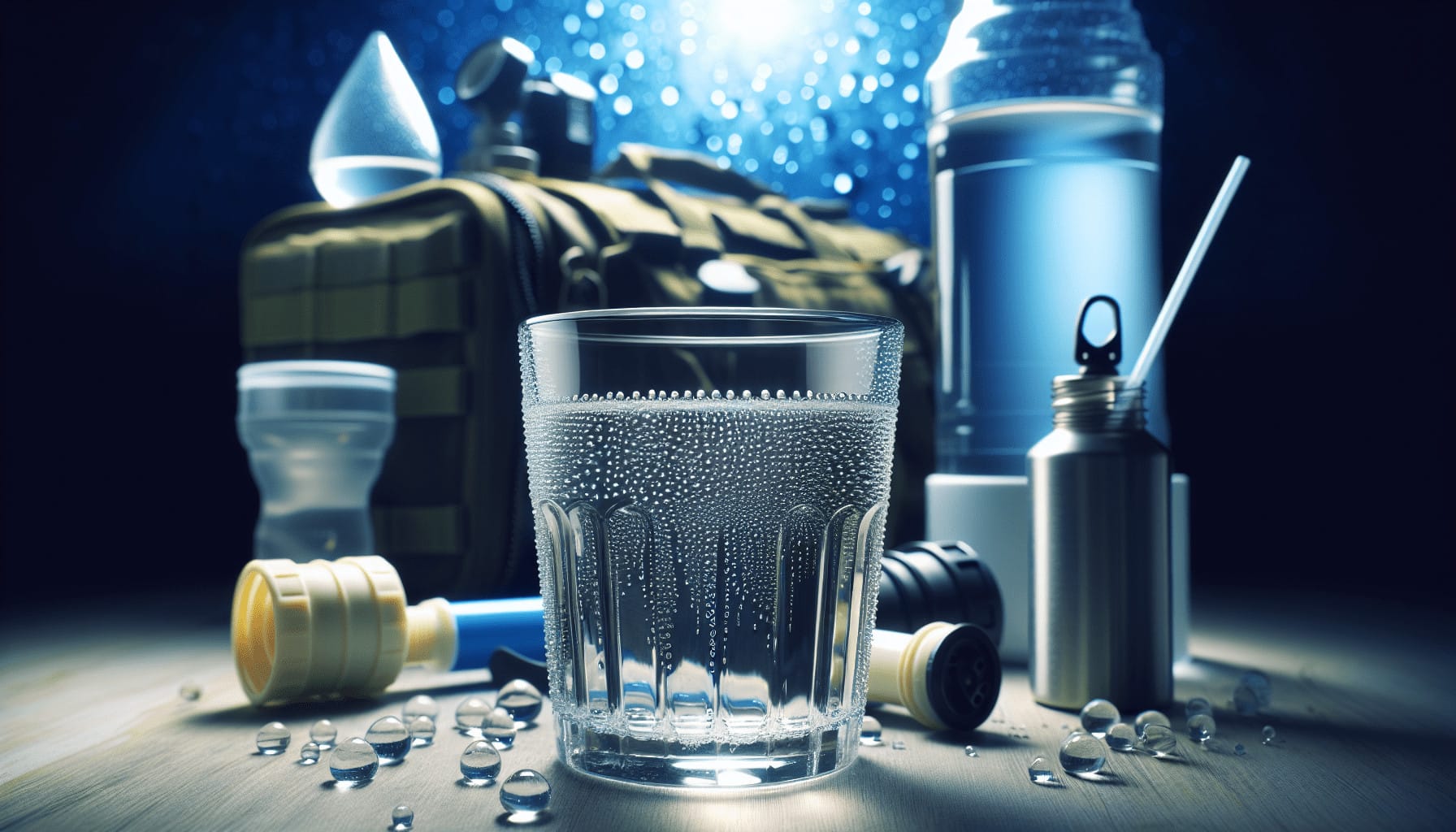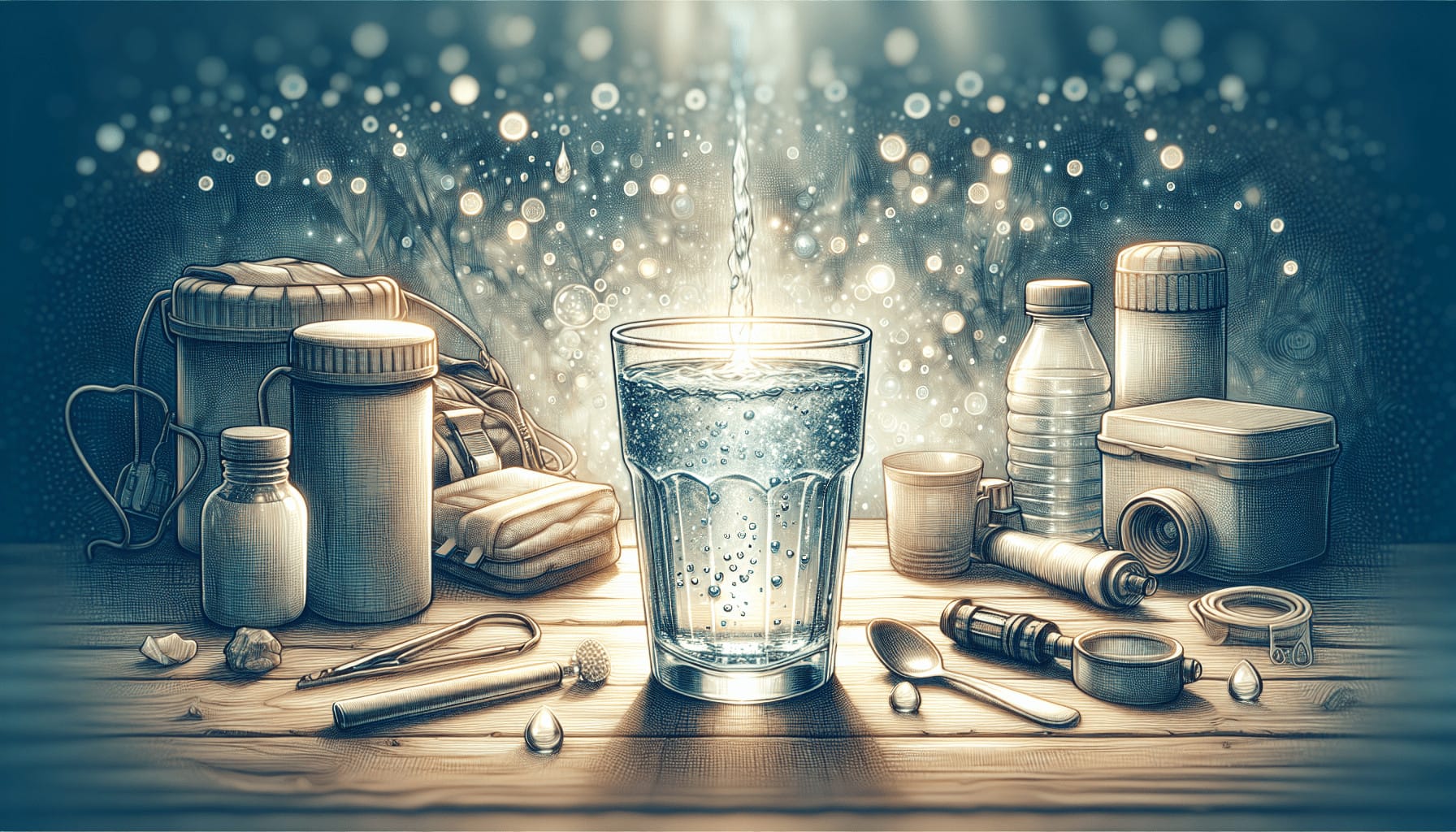Have you ever stopped to consider what you would do if you suddenly found yourself without access to clean drinking water? In emergency situations, the ability to secure clean water quickly becomes crucial for survival. Whether it’s due to natural disasters, infrastructure failures, or unexpected events, having a plan to obtain safe drinking water can make a significant difference in how you manage the situation.
Understanding the Importance of Clean Drinking Water
Water is essential for life, and while it might seem readily available, emergency situations can make access to clean water a challenge. Your body needs water to function properly; it helps in digestion, absorption, circulation, and even in regulating body temperature. Without it, you can quickly face dehydration, which can lead to severe health consequences.
Water Quality Problems
In emergencies, water quality can be compromised due to several factors like contamination from chemicals, bacteria, viruses, or pollutants. It’s important to remember that not all water that appears clean is safe for consumption. Contaminated water can cause illnesses and other health issues, making it crucial to ensure your water source is safe.
Dehydration Risks
Dehydration can set in faster than you’d expect in emergency situations, especially if the weather is hot or if you’re exerting yourself physically. Symptoms of dehydration include headaches, dizziness, dry mouth, and in severe cases, confusion or unconsciousness. Being proactive about ensuring access to clean water is essential to avoiding these risks.
Methods to Secure Clean Drinking Water
Thankfully, there are multiple approaches you can take to secure clean drinking water when usual supply methods become unavailable. Here are some of the most effective methods you can consider.
Water Filtration
Filtration is a straightforward way to remove particles, sediment, and some microorganisms from water. Filters come in various forms, such as portable filtration systems, faucet attachments, or larger setups for entire households.
-
Portable Water Filters: These are ideal for emergency kits or when you’re on the move. They’re small, lightweight, and can effectively filter out bacteria and protozoa from water sources.
-
Activated Charcoal Filters: Often found in domestic water filters, activated charcoal can remove a wide array of impurities like chlorine, sediment, and some volatile organic compounds, improving taste and odor.
Boiling Water
Boiling water is one of the oldest and most effective ways of killing bacteria, parasites, and viruses. Bringing water to a rolling boil for about one to three minutes (depending on altitude) can effectively sanitize it. Although boiling won’t remove chemical pollutants or heavy metals, it’s a reliable method for biological contaminants.
Chemical Purification
Chemical purification involves using disinfectants to make water safe. Commonly used chemicals include iodine, chlorine, and potassium permanganate.
-
Iodine Tablets: These are easy to carry and can effectively kill pathogens. However, they may leave a taste, and long-term use isn’t recommended.
-
Chlorine Drops: Similar to iodine tablets, chlorine can purify water, but it depends on the water temperature, pH, and the presence of other substances.
UV Water Purifiers
These devices use ultraviolet light to kill bacteria, viruses, and other pathogens in water. They’re battery-operated, portable, and can purify water quickly, making them an excellent addition to any emergency kit. The downside is they require power and won’t remove chemical contaminants.
Solar Disinfection
Also known as SODIS, this method uses sunlight to purify water. It’s a simple and inexpensive method that involves filling clear plastic bottles with water and leaving them in direct sunlight for at least six hours. The UV rays from the sun help to kill pathogens. However, this method works best with clear and clean water.
Distillation Methods
Distillation can remove a wide variety of contaminants, including heavy metals, salts, and biological threats. The process involves boiling water to produce steam, which is then condensed back into liquid form, leaving impurities behind. While highly effective, it’s time-consuming and requires equipment.

Preparing for Water Emergencies
Preparing in advance is vital to ensure you’re not caught off guard in case of a water emergency. Here’s how you might prepare to secure clean drinking water:
Emergency Water Storage
Having a supply of stored water can be a lifeline during an emergency. Aim for at least a three-day supply per person, which is about one gallon per person per day for drinking and sanitation. Store water in clean, food-grade containers and rotate it regularly to keep it fresh.
Water Collection Systems
Setting up systems to collect rainwater or utilize other natural sources can be beneficial. Ensure you have proper filtration and purification systems to make the collected water safe for consumption. Remember to check local regulations regarding water collection, as laws can vary.
Creating an Emergency Kit
Your emergency kit should include the essentials for water purification like portable filters, purification tablets, and even a small pot for boiling water. Additionally, having a few sealed pouches of commercial emergency water can provide a backup when other methods aren’t available.
Knowledge and Skills
Learning basic skills like how to quickly set up a solar still, improvise a water filter, or identify natural signs of clean water sources can be invaluable. Practice these skills before an emergency arises, so you feel confident using them when needed.
When Not to Drink Water
Understanding when water might be unsafe is crucial. Avoid drinking water if you suspect contamination from:
-
Chemical Spills: Industrial or agricultural run-off can introduce harmful chemicals.
-
Flood Waters: Often contaminated with sewage, chemicals, and debris.
-
Uncertain Sources: If the quality of the water is unknown and cannot be immediately tested or treated.

Monitoring and Testing Water Quality
Having tools to test water quality can be beneficial in emergency situations. Portable water testing kits can help detect the presence of contaminants like nitrates, phosphates, heavy metals, and bacteria. Although they won’t replace purification methods, they’ll provide a clearer picture of the water’s quality.
Importance of Community and Resources
Collaborating with neighbors or local community groups can be advantageous, especially if resources are shared. Community efforts can lead to better water solutions, such as shared rainwater harvesting systems or even pooled investment in larger-scale purification devices.
Community Water Sources
Evaluate and understand the local community water sources available. Access to community water wells, cooperation in securing water delivery from government or nonprofit agencies, and local support can be crucial in emergencies.
Government and Nonprofit Support
Familiarize yourself with the support your local government and nonprofits offer during emergencies. Many organizations provide resources like bottled water, mobile water purification units, or even expert guidance on securing clean water.
Conclusion
Knowing how to secure clean drinking water in emergencies is a vital skill that can safeguard your health and well-being. By understanding various purification methods and preparing in advance, you can ensure access to safe water when it’s needed most. Whether through filtration, boiling, or chemical treatment, having a reliable plan in place will give you peace of mind in any situation. Remember to communicate with your community, stay informed about available resources, and always consider the quality of water sources before consumption.
